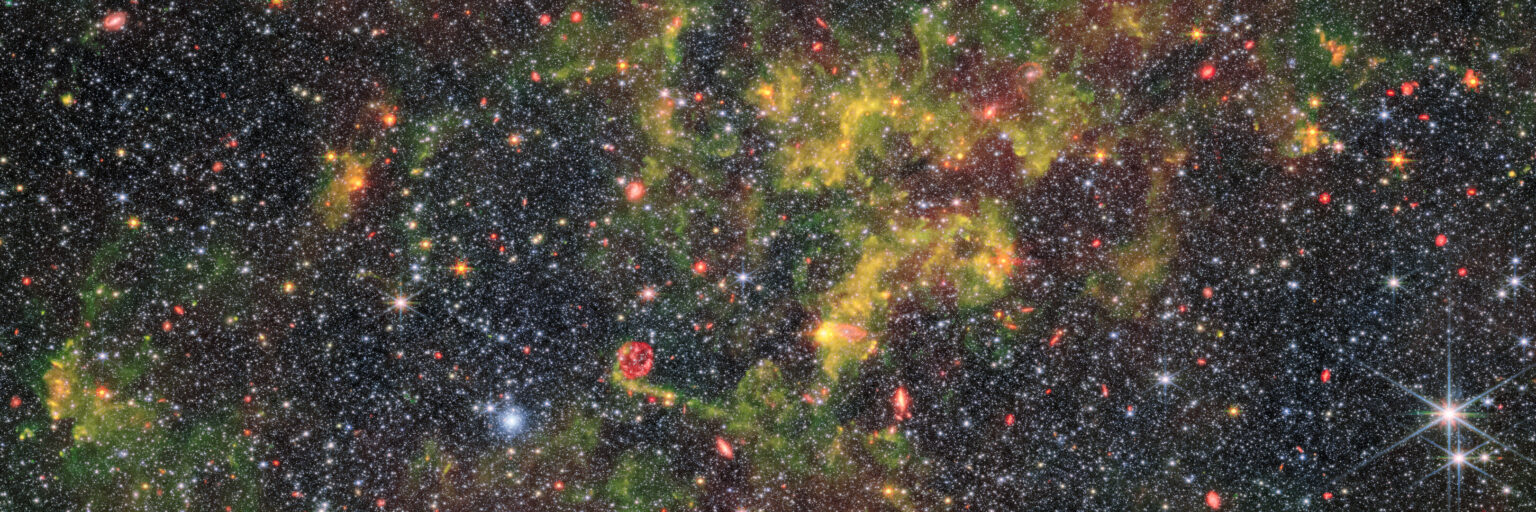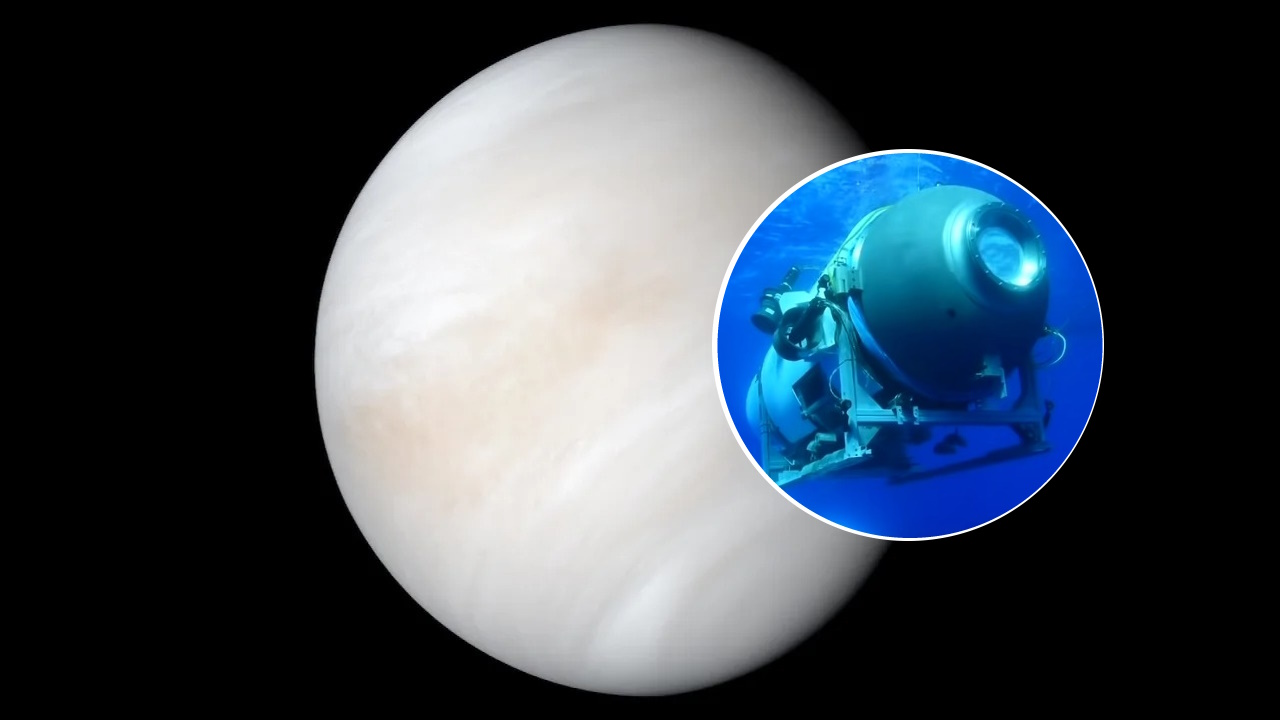Selection of the most interesting space news for the week: NASA analysts assessed how the destruction of the Kakhovka dam affected agriculture; scientists received a signal from Voyager 2, and we tell how the Ukrainian team of rocket modelers was preparing for international competitions in the USA.

Anyone who stops learning is old, whether at twenty or eighty. Anyone who keeps learning stays young. The greatest thing in life is to keep your mind young.
— Henry Ford
Dirty underwear can be a problem for colonists on the Moon
The European Space Agency has expressed interest in a study aimed at overcoming the problem of the stench that accumulates in astronauts’ underwear. This project aims to keep the inside of the spacesuits clean for future Artemis missions because, in the conditions of living on the Moon or in a spacecraft, regular washing of spacesuits turns out to be impractical. The process of washing the suit is quite complicated. At the same time, the resulting dirtiness can be a problem, especially when several astronauts use the spacesuit together.
Currently, antimicrobial materials such as silver and copper are used in the design of spacesuits. But the ESA points to the possibility of irritation of the astronauts’ skin from their use, the transfer of infections, as well as the characteristic tarnishing of spacesuits with regular use. As part of a broader project called “Planetary Exploration Textiles” (PExTEx), the Austrian Space Forum took responsibility for the implementation of the project “Biocidal Advanced Coating Technology for Reducing Microbial Activity” (BACTeRMA). To solve this problem, scientists are working on the BACTeRMA project. They are investigating chemical compounds known as secondary metabolites that produce microbes to protect themselves. These compounds have various properties, in particular, some of them have antibiotic properties.
Voyager 2 is alive: NASA receives signal from interstellar space
The NASA Deep Space Communications Network (DSN) managed to intercept a signal from the Voyager 2 probe located in interstellar space. It confirms that the Earth messenger remains operational and continues to transmit information. On July 21, 2023, NASA lost contact with Voyager 2. This was due to a set of commands passed to it, one of which turned out to be erroneous. After completing it, the spacecraft changed its orientation and its antenna deviated from the communication line with the Earth by two degrees. This turned out to be enough for Voyager 2 to lose the ability to both receive commands and transmit the collected information.
It is worth saying that Voyager 2 has a built-in fail-safe just in case of such a situation. The spacecraft is programmed to periodically “reset” its orientation so that its antenna always remains directed towards the Earth. The problem is that the next such reset will take place on October 15. In this situation, NASA decided to try to shorten the waiting period and use the Deep Space Communication Network to hear Voyager. A set of antennas in Canberra was used for this. This is the only station on Earth capable of maintaining communication with an apparatus located at a distance of almost 20 billion km.
Metal Asteroid Explorer gets giant solar arrays
Specialists of the Kennedy Space Center successfully installed solar arrays on the Psyche probe. This operation was one of the last steps on the way to the launch scheduled for October. The target of Psyche is the asteroid Psyche, characterized by a high content of metals (iron and nickel). According to a popular hypothesis, it is a fragment of the core of a protoplanet that died at the beginning of the Solar System.
The orbit of Psyche is located at a distance of 430 million km from the Sun and its surroundings receive ten times less sunlight than the surroundings of the Earth. Therefore, the designers had to equip Psyche with very impressive photovoltaic arrays, which have a total surface area of 75 m2. These are the largest solar arrays ever built by NASA’s Jet Propulsion Laboratory. They will turn fuel (inert gas xenon) into plasma, and then accelerate it in an electric field, creating a weak but continuous jet thrust that can be maintained for years. Due to the absence of atmospheric drag during its journey through the asteroid belt, the spacecraft will accelerate relative to the Earth to a speed of 200,000 km/h.
The last “Ukrainian” Antares successfully reached orbit
On the night of August 1-2, the American Antares rocket successfully launched into space. It launched the Cygnus spacecraft into orbit, which would deliver supplies to the ISS. This launch is the last for the carrier version, which uses the first stage built in Ukraine. This mission is called NG-19 and is part of the commercial service mission program that NASA is implementing together with several companies. The Cygnus cargo spacecraft is carrying 3,700 kg of various supplies and auxiliary materials to the space station. This time it got its own name, Laurel Clark, in honor of the US astronaut who died in the Columbia shuttle disaster.
However, for Ukraine, something else is more important in this mission. This is the latest Antares 230 series rocket. They used stages built at the Ukrainian enterprise “Southern Machine-Building Plant”, located in the Dnipro. Our country has been a reliable partner of Northrop Grumman for many years in launching these rockets, but Russia’s large-scale invasion has made production impossible.
NASA satellites: How the destruction of the Kakhovka dam affected agriculture
The NASA Harvest team uses satellites to monitor how the situation is developing in the south of Ukraine. After the destruction of the Kakhovka HPP, the canals became shallow, and at the same time, there was a threat to the fields that were irrigated with them. However, no catastrophic consequences have been observed so far. And at the same time, water stopped flowing into the four main irrigation canals that took it from this reservoir. It just stopped getting into the water intakes. Now NASA Harvest specialists are studying how this will affect agriculture in the region. This work is part of a much larger study that aims to understand how the Russian invasion affected crop production in Ukraine.
The natural ecosystem on the territory of Zaporizhzhia, Kherson and the south of Dnipropetrovsk regions is a semi-dry steppe. During the summer, there is usually from 100 to 120 mm of precipitation. This is not enough for growing cereals, corn, sunflowers, watermelons and tomatoes. However, since the 1960s, a network of canals with a total length of 12 thousand km has been built here, which provide 500 thousand hectares of fields with water. However, now they are all empty and the Ministry of Agrarian Policy of Ukraine warns of the threat of desertification of several million hectares starting from 2024.
Photo of the week

The James Webb Space Telescope (JWST) photographed the irregular galaxy NGC 6822. The image shows the distribution of dust inside it. NGC 6822 is one of the Milky Way’s closest neighbors. It is an irregular galaxy located at a distance of 1.5 million light-years from Earth. NGC 6822 has a very low metallicity (the content of elements heavier than hydrogen and helium), which makes it an ideal natural laboratory for studying the processes in the early Universe. Among them are the evolution of stars and the life cycle of interstellar dust.
Interesting figure — house on Venus for 1,000 people

One of the extremely ambitious projects is currently being prepared by the startup Humans2Venus. This is a research group created by Guillermo Sohnlein, co-founder of OceanGate, whose bathyscaphe Titan tragically sank while diving to the infamous Titanic. This project aims to create a colony that will float above the extremely hot surface of Venus, the hottest planet in the Solar System. Sohnlein expresses the hope that by 2050 it will be possible to build a house for 1,000 people there. Venus, although it is sometimes called the “twin of the Earth”, is actually very hostile. The dense carbon dioxide atmosphere of the planet creates a powerful greenhouse effect. As a result, the temperature on its surface reaches a hellish 475 degrees Celsius. If Venus is the sister of the Earth, then it is very evil and hostile, as if Ukraine’s aggressive neighbor in the northeast.
Something to read on the weekend

This week, the National Aeronautics and Space Administration (NASA) turned 65 years old. There are many myths and misconceptions about NASA, one of which is that the organization has a truly “astronomical” budget that allows it to do whatever it wants. Unfortunately, the reality is quite different. Our journalist, Mykyta Lytvynov, reveals the secret of what the NASA budget really is. And finally we offer you our new material on ecology. This time you will learn about five important technologies for environmental protection. They were also born thanks to the achievements of the space age.
Follow us on Twitter to get the most interesting space news in time
https://twitter.com/ust_magazine
